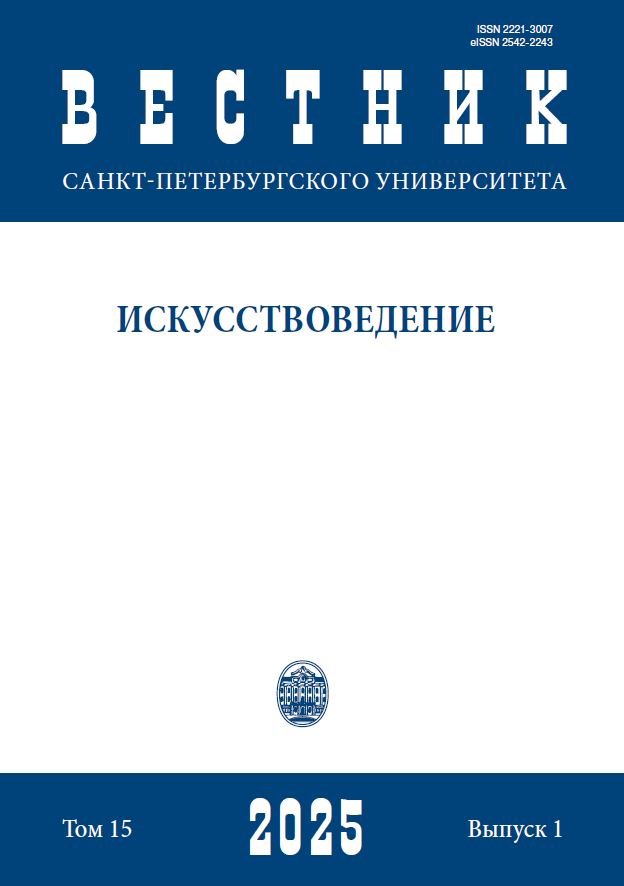The Painting on Fabric: History, Technology and Role in the Development of the Leningrad School of Artistic Textiles
DOI:
https://doi.org/10.21638/spbu15.2025.106Abstract
The painting on fabric (or the batik technique) became firmly established in the educational process and creative practice of artists at the turn of the 20th–21st centuries. However, in Russian art history there are no publications that reflect the specifics of the spread of this technique in Europe, the USA and Russia. This article is devoted to the peculiarities of the use of painting on fabric in textile factories and its role in the development of the Leningrad school of artistic textiles. This article is about the peculiarities of using fabric painting in textile factories and its role in the development of the Leningrad school of artistic textiles. The purpose of the article is to summarize information about the applying of batik in the textile industry and art workshops. The article not only describes the historical stages of the introduction of batik into artistic practice, but also introduces into scientific circulation new data related to previously unpublished works of Leningrad textile artists. The author shares the concepts of “fabric painting”, “direct painting on fabric”, “hot batik”. It was revealed that in the USSR the most common term was “fabric painting,” which, on the one hand, reflected the hand-made nature of the technique, and on the other, emphasized that painted curtains and panels belonged to the sphere of monumental and decorative art. It has been established that the assortment has changed from small products to monumental curtains; from household items to art exhibits. It is shown that the evolution of artistic painting on fabric influenced educational programs in universities and technical schools; batik became a part of the art exhibitions and interiors of public buildings throughout the USSR. Based on the archival sources, Soviet periodicals and interviews with artists, the author concludes that painting on fabric was one of the main directions in which Leningrad textiles developed in the 1950–1980s.
Keywords:
Leningrad textile school, batik, fabric painting, Mikhail Zvyagin, Arsen Kardashev, Leningrad textile factories, batik-stift, production artels, batik in art education
Downloads
References
Downloads
Published
How to Cite
Issue
Section
License
Articles of "Vestnik of Saint Petersburg University. Arts" are open access distributed under the terms of the License Agreement with Saint Petersburg State University, which permits to the authors unrestricted distribution and self-archiving free of charge.







